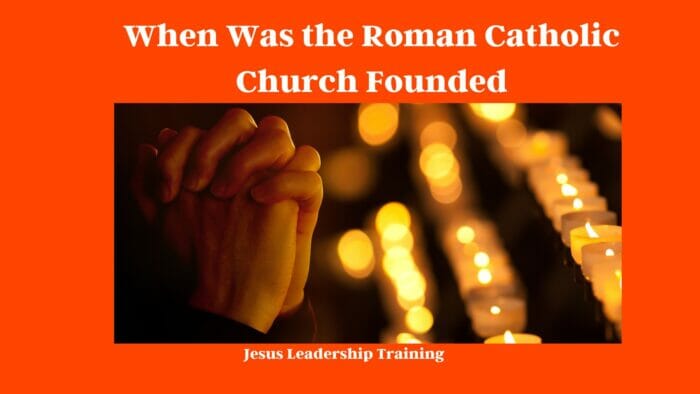The Roman Catholic Church, one of the oldest and most influential religious institutions in the world, has a rich and complex history. The question of when the Roman Catholic Church was founded is a topic of great significance, as it marks the beginning of an institution that has shaped Western civilization for centuries.
In this article, we will delve into the origins of the Roman Catholic Church, exploring its historical context, key figures, and the events that led to its establishment. So, let’s embark on a journey through time to discover the fascinating story of the Roman Catholic Church! When Was the Roman Catholic Church Founded?
Table of Contents
When Was the Roman Catholic Church Founded?
The founding of the Roman Catholic Church can be traced back to the life and ministry of Jesus Christ in the first century AD. The story begins with Jesus, a charismatic Jewish preacher from Nazareth, who gathered a group of disciples and taught them his teachings of love, forgiveness, and salvation. He proclaimed himself as the Son of God and performed miracles to demonstrate his divine authority.
Founding of the Roman Catholic Church | When Did Roman Catholicism Start
- The Early Church (1st – 4th centuries):
The early Church was founded by Jesus Christ and his Apostles in the 1st century. This period marked the beginning of the Catholic faith, which was centered around the teachings of Jesus and his Apostles. During this time, the Church experienced rapid growth and expansion, as well as persecution from the Roman Empire. - The Age of the Fathers (4th – 5th centuries):
In the 4th and 5th centuries, the Church continued to grow and develop its theology and structure. This period saw the rise of the “Fathers of the Church,” which included St. Augustine, St. Jerome, and St. Ambrose, among others. These Fathers developed and refined the doctrines of the Church, laying the groundwork for the Church’s structure. - The Age of the Papacy (6th – 8th centuries):
The 6th century marked the rise of the Papacy as the leader of the Church. Popes were elected by the people and were responsible for guiding the Church through difficult times. This period also saw the development of the Catholic hierarchy, with the Pope as the leader, followed by cardinals, bishops, and priests. - The High Middle Ages (9th – 13th centuries):
The High Middle Ages saw the Church become increasingly powerful and influential. Papal authority was at its height during this period, and the Church continued to develop its theology and structure. This period also saw the beginning of the Crusades, which were fought in the name of the Catholic faith. - The Late Middle Ages (14th – 16th centuries):
The Late Middle Ages saw the Church become even more powerful and influential. This period also saw the rise of the Papal States, where the Pope had temporal authority over a large area of land. During this time, the Church also began to be more involved in politics and in social issues. - The Reformation (16th century):
The Reformation was a period of great turmoil for the Church. It began in the 16th century, when Martin Luther and other reformers began to challenge the Church’s teachings and authority. This period saw the spread of Protestantism and the division of the Church into the Roman Catholic and Protestant branches. - The Counter Reformation (17th century):
In response to the Reformation, the Church launched what is known as the Counter Reformation. This period saw the Church reaffirm its teachings and authority, as well as launch the Jesuit order, which was dedicated to defending the faith. This period also saw the Church become more involved in politics and diplomacy. - The Modern Church (18th century onwards):
The modern Church began in the 18th century, when the Church began to be more involved in global issues and more open to ecumenism. This period also saw the Church become more engaged with the world outside of the Church, and it has continued to be a major force in the world today.
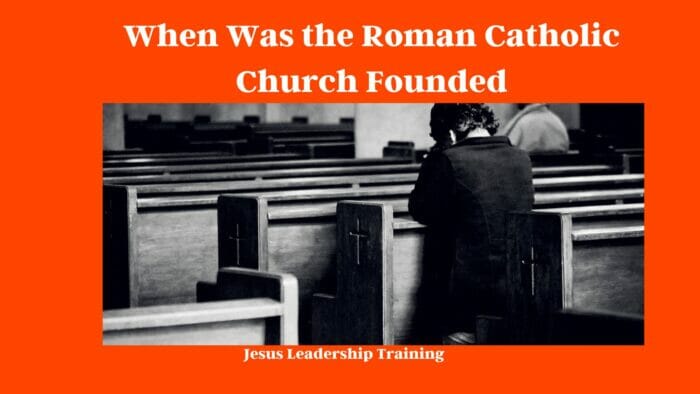
The Crucifixion and Resurrection of Jesus
One of the pivotal events in the formation of the Roman Catholic Church is the crucifixion and resurrection of Jesus. According to Christian belief, Jesus was crucified on a cross in Jerusalem, sacrificing himself to atone for the sins of humanity. However, three days after his death, Jesus rose from the dead, which became a central tenet of Christian faith.
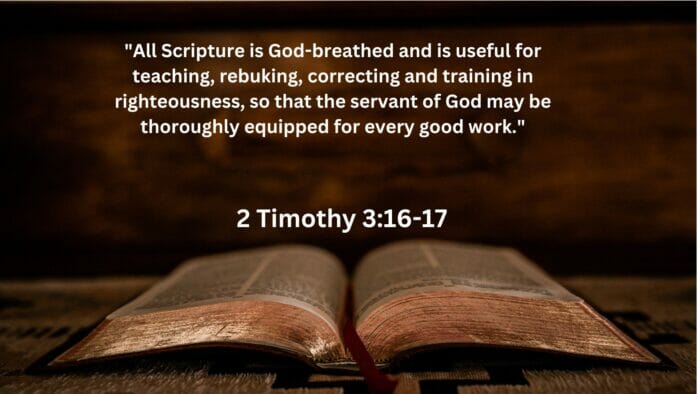
The Apostles and the Early Christian Community
Following the resurrection of Jesus, his disciples, known as the Apostles, became the primary leaders of the early Christian community. They spread his teachings, known as the Gospel, and established Christian congregations throughout the Mediterranean region. Peter, one of the closest disciples of Jesus, played a prominent role in the early Christian movement and became recognized as the first Bishop of Rome.
The Emergence of the Papacy
The concept of the Papacy, the office of the Pope, gradually emerged in the early centuries of Christianity. The term “pope” derives from the Latin word “papa,” meaning “father,” and it refers to the Bishop of Rome who holds primacy and authority over the entire Catholic Church. The Bishop of Rome was seen as the successor of Saint Peter, to whom Jesus entrusted the leadership of the Church.
The Edict of Milan and the Recognition of Christianity
In the early fourth century, Christianity faced persecution under the Roman Empire. However, the situation changed with the Edict of Milan in 313 AD, issued by Emperor Constantine the Great. This edict granted tolerance to Christianity and recognized it as a legitimate religion within the empire. This pivotal moment in history allowed Christianity to flourish and gain influence.
The Council of Nicaea and the Nicene Creed
The Council of Nicaea, convened by Emperor Constantine in 325 AD, played a crucial role in the development of early Christian doctrine. The council aimed to resolve theological disputes and establish a unified belief system. It resulted in the formulation of the Nicene Creed, a statement of faith that defined the core tenets of Christianity and became a foundation of Roman Catholic theology.
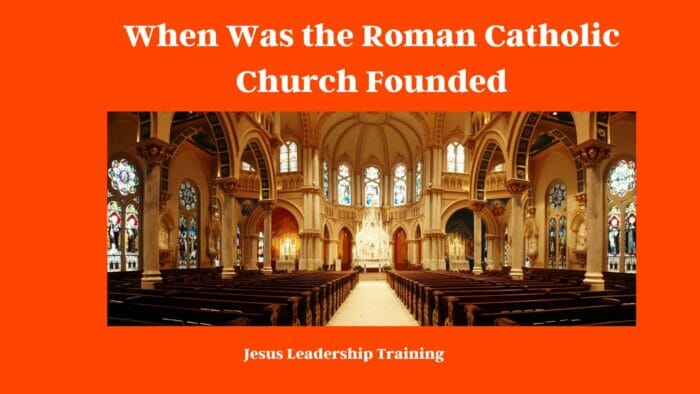
What Was the Nicene Creed?
The Nicene Creed, a cornerstone of Christian faith, serves as an essential declaration of belief for billions of Christians worldwide. But what exactly is it, and why does it matter so much?
Historical Context
The Need for a Creed
The creed’s origin dates back to the early 4th century, a time when the Christian church was wrestling with a myriad of theological debates and doctrinal confusions. The church needed a definitive statement of faith, a universally agreed-upon expression of beliefs, to unify its followers.
The Council of Nicaea and Emperor Constantine’s Role
Enter the Council of Nicaea. In 325 AD, Roman Emperor Constantine convened this council, inviting bishops from across the empire. The council’s objective? To reach a consensus on these contentious issues, especially the nature of Christ’s divinity, a hotly debated topic at the time.
Content of the Nicene Creed
The result of the Council of Nicaea was the first version of the Nicene Creed, a succinct yet profound statement of Christian belief.
Key Beliefs in the Creed
The Nicene Creed focuses on several essential doctrines, providing a structure to understand God’s nature and the church.
God the Father
The creed begins by affirming belief in “one God, the Father Almighty, maker of heaven and earth, of all things visible and invisible.”
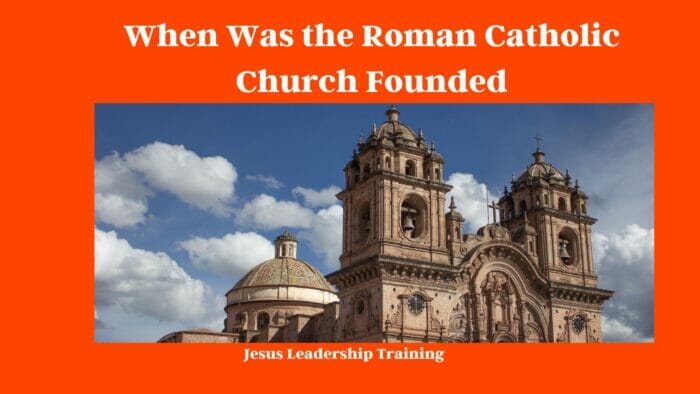
God the Son
It then goes into the nature of Christ, acknowledging him as the only Son of God, begotten from the Father before all ages. The Creed unequivocally confirms Jesus’ divine status: “God from God, Light from Light, true God from true God.”
God the Holy Spirit
It further addresses the Holy Spirit, whom it identifies as “the Lord, the giver of life,” who with the Father and the Son is worshipped and glorified.
The Church
The Creed also highlights the belief in “one, holy, catholic, and apostolic church.”
Interpretation and Influence
The Nicene Creed, as a defining document, has had profound influence on Christian theology and liturgical practices.
Influence on Christian Theology
The Creed serves as a theological touchstone, outlining the fundamental principles that all mainstream Christian denominations share. It has shaped and continues to influence Christian understanding of God and Christ’s nature.
Adoption and Usage in Liturgy
Beyond its theological implications, the Creed has also found a vital place in Christian worship, being recited in both Catholic and Protestant liturgical services.
Controversies and Debates
Arianism
The council that created the Nicene Creed was not without its critics. The most significant opposition came from Arianism, a belief that denied the full divinity of Jesus Christ.
The Filioque Controversy
Another controversy arose with the Western Church’s addition of the term “Filioque” (and the Son) to the section about the Holy Spirit, causing a significant East-West schism within the Church.
Conclusion
The Nicene Creed, while a product of its time, continues to be a significant instrument of unity among Christians, offering a condensed yet comprehensive synopsis of their faith. Despite the controversies, its enduring relevance underscores its fundamental importance to Christian identity.
FAQs
1. When was the Nicene Creed established?
The Nicene Creed was established at the Council of Nicaea in 325 AD.
2. Why was the Nicene Creed created?
The Nicene Creed was created to define and unify Christian beliefs, particularly in response to theological debates about the nature of Christ’s divinity.
3. What are the main points of the Nicene Creed?
The Nicene Creed focuses on belief in God the Father, Son, and Holy Spirit, the resurrection, the Church, and the forgiveness of sins.
4. How does the Nicene Creed influence modern Christianity?
The Nicene Creed is a foundational statement for most Christian denominations and is regularly used in liturgical services.
5. What is the controversy about the “Filioque”?
“Filioque” is a term added by the Western Church to the Nicene Creed indicating that the Holy Spirit proceeds from the Father “and the Son”. This addition has been a major point of contention between the Eastern Orthodox and Western churches.
The Formation of the Roman Catholic Church
While the early Christian community spread across various regions, the Roman Catholic Church gradually took shape as an organized institution. The term “Catholic” derives from the Greek word “katholikos,” meaning “universal,” reflecting the Church’s aim to encompass all believers. By the end of the fourth century, the Roman Catholic Church had established its hierarchical structure, with the Pope as its supreme leader.
The Role of Saint Augustine
Saint Augustine, a theologian and philosopher who lived in the fourth and fifth centuries, played a significant role in shaping the theology and practices of the Roman Catholic Church. His writings, particularly his influential work “The City of God,” explored the relationship between earthly and heavenly realms and emphasized the role of grace in salvation.
The Roman Catholic Church is one of the oldest and most influential religious institutions in the world. It is the largest Christian denomination in the world, with more than 1.2 billion members. It has had a profound impact on world history, culture, and politics, and its teachings and beliefs have been the driving force behind much of the Western world’s moral and ethical development.
The Roman Catholic Church has a long and complex history, so it is important to understand when it was founded and how it has evolved over time.
Exploring the History of Roman Catholicism
The Roman Catholic Church traces its roots to the teachings of Jesus Christ and to the earliest Christian communities in the first century. It was during this time that Jesus taught his followers about the importance of loving one another and living according to God’s commandments. After his death, his followers spread his message throughout the Roman Empire, and the early Christian church slowly began to take shape.
The Founder of the Roman Catholic Church
The founder of the Roman Catholic Church is generally accepted as Jesus Christ himself. Jesus was a Jewish teacher who lived in the Roman province of Judea during the first century. He was a renowned religious leader who taught about the importance of living according to God’s laws and loving one another. His teachings had a profound effect on the early Christian church and on the development of the Roman Catholic Church.
A Look at the Catholic World
The Catholic world is vast and diverse. There are more than 1.2 billion Catholics spread across the globe, and the Church’s presence can be seen in virtually every corner of the world. The Church is divided into 22 distinct rites or churches, each of which has its own unique traditions, customs, and beliefs. In addition, there are numerous active and influential Catholic organizations, universities, charities, and schools.
Exploring Catholic History and Tradition
Catholicism has a deep and complex history that dates back centuries. It has evolved over time and has been shaped by a variety of factors, including political and social changes, as well as religious and theological developments. Its history is closely intertwined with the history of Western civilization and its teachings have had a profound effect on modern culture.
Tracing the Start of the Church
The Roman Catholic Church officially began in the year 1054 with the Great Schism, a split between the Western (Roman) and Eastern (Byzantine) churches. This schism was caused by a number of factors, including political and theological disagreements. The Roman Catholic Church was officially established in the year 1517 with the publication of Martin Luther’s Ninety-Five Theses.
The Role of the Pope in the Roman Catholic Church
The Pope is the leader of the Roman Catholic Church and is considered to be the successor of St. Peter, one of Jesus’s original 12 disciples. The Pope is the head of the worldwide Catholic Church and is responsible for setting doctrine and teaching the faithful. He is also the leader of the College of Cardinals, a group of high-ranking Catholic officials who are responsible for electing new Popes.
Examining the Papacy of Pope Leo
The papacy of Pope Leo X (1513-1521) is often seen as a pivotal moment in the history of the Roman Catholic Church. Pope Leo was a highly influential figure who was responsible for reforming the Church and initiating a number of important reforms. He was also a patron of the arts and a great supporter of the Renaissance.
Understanding Catholic Doctrine and Teachings
Catholicism is a faith based on the teachings of Jesus Christ. Its doctrine is rooted in the Bible and is focused on the belief that Jesus is the son of God and that he died to save humanity from sin. The Church’s teachings emphasize the importance of living a moral life, loving one another, and helping the poor and needy.
An Overview of the Vatican
The Vatican is the center of the Catholic Church and is home to the Pope and the Roman Curia, the central government of the Church. It is located in Rome and is the smallest independent state in the world. It is a major religious and cultural hub and is home to a number of important religious sites, including St. Peter’s Basilica and the Sistine Chapel.
The Significance of Roman Catholic Liturgy
Catholic liturgy is a set of rituals that are performed in order to worship God and celebrate the sacraments. These rituals include prayer, the Mass, and other sacramental rites. The liturgy is an important part of Catholic life and is seen as a way to connect with God and understand his teachings.
Roman Catholicism and the Reformation
The Reformation was a period of religious and political upheaval in the 16th century. It was a movement led by Martin Luther and other reformers who sought to reform the Church and restore the purity of Christian life. The Reformation had a profound effect on the Roman Catholic Church, leading to a period of intense debate and conflict.
How the Roman Catholic Church Spread Across the Globe
The Roman Catholic Church spread across the globe thanks to a number of mission trips and other missionary efforts. Missionaries traveled to areas such as Africa, Asia, and the Americas in order to spread the faith and bring people to Christ. The Church’s presence in these areas has had a profound effect on local cultures and societies.
The Influence of Roman Catholicism on Modern Society
The Roman Catholic Church has had a major influence on modern society. Its teachings and beliefs have been instrumental in shaping moral and ethical values in the Western world. In addition, its presence has had a positive influence on education, healthcare, and other social services in many parts of the world.
How Roman Catholic Beliefs Impact Contemporary Issues
The Roman Catholic Church’s teachings and beliefs have a significant influence on contemporary issues such as abortion, same-sex marriage, and the death penalty. Its stance on these issues is often seen as controversial, but its teachings have had a profound effect on public discourse and policymaking.
Examining When the Roman Catholic Church was Founded
The Roman Catholic Church was officially founded in the year 1054 with the Great Schism. This was a split between the Western (Roman) and Eastern (Byzantine) churches and was caused by a variety of factors, including political and theological disagreements. The Church was officially established in the year 1517 with the publication of Martin Luther’s Ninety-Five Theses.
Frequently Asked Questions about the Founding of the Roman Catholic Church
1. Who was the first Pope of the Roman Catholic Church?
The first Pope of the Roman Catholic Church was Saint Peter, who was one of the twelve apostles chosen by Jesus Christ. He is traditionally regarded as the founder of the Church and served as its first bishop.
2. Did Jesus establish the Roman Catholic Church?
While Jesus did not explicitly establish the Roman Catholic Church during his lifetime, he laid the foundation for it through his teachings and the appointment of Peter as the leader of the disciples. The Roman Catholic Church developed over time as an institutionalized form of Christianity.
3. How did the Roman Catholic Church become so powerful?
The Roman Catholic Church’s influence and power grew over the centuries through a combination of factors, including its close association with political leaders, its organizational structure, its role in education and healthcare, and its missionary efforts. It became a dominant force in medieval Europe and played a significant role in shaping Western civilization.
4. Are the Roman Catholic Church and the Catholic Church the same?
Yes, the terms “Roman Catholic Church” and “Catholic Church” are often used interchangeably and refer to the same institution. The word “Roman” emphasizes the Church’s connection to the city of Rome, where the Pope resides.
5. When did the Roman Catholic Church split from the Eastern Orthodox Church?
The split between the Roman Catholic Church and the Eastern Orthodox Church, known as the Great Schism, occurred in 1054 AD. It was the result of theological, cultural, and political differences between the churches in the East and West, leading to the division of Christianity into two distinct branches.
6. How has the Roman Catholic Church evolved over time?
The Roman Catholic Church has undergone significant changes and adaptations throughout history. It has navigated through periods of reform, faced challenges such as the Protestant Reformation, and embraced various social and cultural transformations. The Second Vatican Council in the 1960s marked a significant moment of modernization and renewal within the Church.
Best Bible Encyclopedias and Dictionaries
Below is a table featuring some highly regarded Bible Encyclopedias and Dictionaries along with their publishers and websites where they can be found or purchased.
| Title | Publisher | Website |
|---|---|---|
| The International Standard Bible Encyclopedia | Eerdmans | Eerdmans |
| Zondervan’s Pictorial Bible Dictionary | Zondervan | Zondervan |
| Easton’s Bible Dictionary | Thomas Nelson | Thomas Nelson |
| Holman Illustrated Bible Dictionary | B&H Publishing Group | B&H Publishing Group |
| The New Unger’s Bible Dictionary | Moody Publishers | Moody Publishers |
| HarperCollins Bible Dictionary | HarperOne | HarperOne |
| Vine’s Complete Expository Dictionary of Old and New Testament Words | Thomas Nelson | Thomas Nelson |
You can generally find these resources on the publishers’ websites, as well as other online book retailers such as Amazon or Christianbook. It’s always good practice to confirm availability and review additional details on the specific websites or other reliable online bookstores.
Final Thoughts – When Was the Roman Catholic Church Founded
The founding of the Roman Catholic Church can be traced back to the life and teachings of Jesus Christ, the crucifixion and resurrection, and the subsequent efforts of his disciples. Over time, the Church evolved, established its hierarchical structure, and played a central role in shaping Western civilization. Today, the Roman Catholic Church continues to be a significant religious institution with millions of followers worldwide, guided by the teachings of Jesus and the leadership of the Pope.




